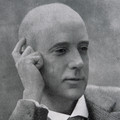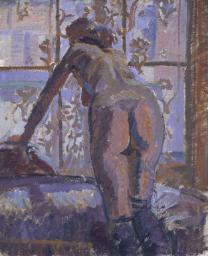Harold Gilman, ‘Composition in Painting’
The Art News, 12 May 1910, p.218.
Composition in Painting.
Almost every picture painted, or at any rate hung on the walls of the galleries, is nothing but an impudent criticism of Nature. To blame the writing critics of these criticisms is to show intolerance of one’s own kind. Creation has prospered in spite of the devil – Art has prospered in spite of the critic. Indeed, denial strengthens positive assertion.
Nature is now most seriously offended; and, indeed, how can one wonder. In the early days of art, when man was first conscious of her excellence, Nature but smiled at all his primitive expressions of his love, knowing that he, a child, not yet could comprehend her fruitfulness. Then came maturity – or what seemed it – and full life was realized and most eloquent expression – perfect art. Then satisfaction, and, alas! dissatisfaction came. Man looked into her face and petulantly uttered this complaint: “I’m tired of this love – this unrestrained emotion. Uncultivated peasant that you are, your very brightness worries me! The colour of your garments is too crude. Your lines don’t harmonize. You have no grace. I am ashamed to speak of what I see. Arrange yourself to suit my “compositions!” Now mortal women are kind as they are weak. The immortal youth of Nature is her power and she is as unkind as she is fair. The last the lover – now turned critic – saw was the most natural, and followed by the closing of the door. There is nothing left him now but this “imagination” – a vague remembrance of what he once has seen. Self-praise and sentimentalism are the results of this divorce – the evidence the pictures on the walls and the masterpieces in the catalogues. This is a true account of the affair. Nature owes her charm to her unconsciousness, and will not be told to change her attitude to suit a “composition.” Many painters have even tried to insist upon crinolines, and the most fantastic apparel, which in their period clothed well enough the pretty peasant, who always is beneath the fashion of the time. Unfashionably dressed, she feels ridiculous, and would look so but for the fortunate fact that she is quite unrecognizable to those who still do love her. This is a great consolation.
No flower is better placed than where it grows, or in a vase by one not thinking of expression. The teacup filled shows best the thought that filled it; when it is emptied another pattern on the table will be formed. Life dictates the shapes. The artist only holds them. If forms don’t please, look for another motive. Nothing but life can imitate the real. The natural inclination of a head or its aversion shows the intention and the subtlest thought. This is composition.
Harold Gilman.
How to cite
Harold Gilman, ‘Composition in Painting’, in The Art News, 12 May 1910, p.218, in Helena Bonett, Ysanne Holt, Jennifer Mundy (eds.), The Camden Town Group in Context, Tate Research Publication, May 2012, https://www


